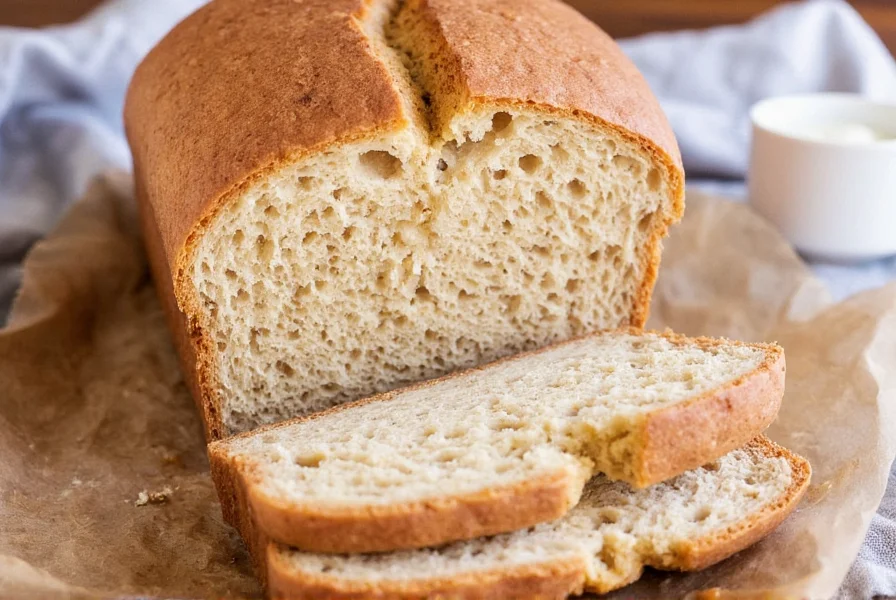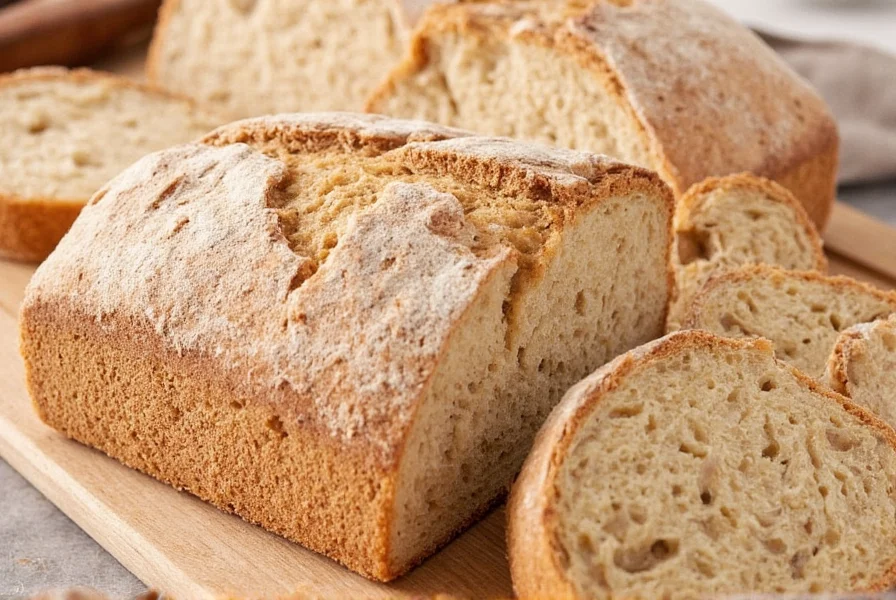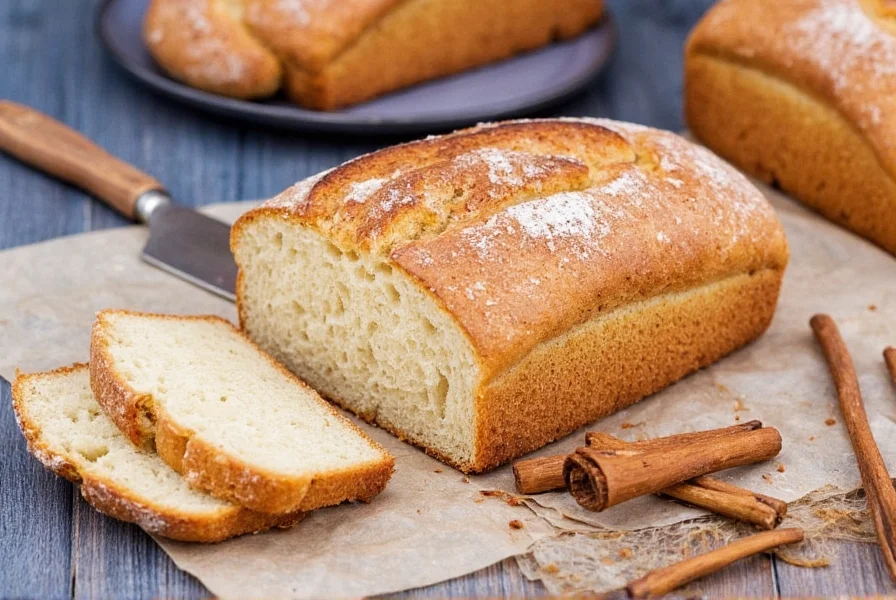Creating exceptional cinnamon sugar sourdough bread requires understanding how to balance the natural acidity of sourdough with sweet flavorings while maintaining proper fermentation. Unlike퀵 yeast breads, sourdough's longer fermentation develops deeper flavors but demands careful timing when incorporating cinnamon and sugar to prevent inhibiting the wild yeast activity. This guide provides a tested method for achieving perfectly swirled cinnamon sugar sourdough with an open crumb structure and balanced flavor profile.
The Unique Chemistry of Cinnamon Sugar Sourdough
When making cinnamon sugar sourdough bread, you're working with two potentially conflicting elements: the natural acids from fermentation and the sugar content that can feed (or sometimes inhibit) your starter. Sugar in moderate amounts actually helps crust development and browning, while cinnamon contains compounds that can slow yeast activity if added too early in the process.
The key to success lies in when and how you incorporate these flavorings. Adding cinnamon and sugar during the shaping phase—rather than during initial mixing—preserves your starter's vitality while ensuring even distribution. This timing prevents the sugar from drawing moisture away from your starter microbes during bulk fermentation, which could result in sluggish rise and compromised flavor development.
| Ingredient | Amount | Function |
|---|---|---|
| Active sourdough starter | 100g | Provides fermentation and leavening |
| Bread flour | 450g | Structure and gluten development |
| Water (lukewarm) | 350g | Hydration for proper dough consistency |
| Sea salt | 9g | Flavor enhancement and gluten strengthening |
| Cinnamon | 3 tbsp | Flavor and aroma |
| Granulated sugar | 1/2 cup | Sweetness and crust development |
Step-by-Step Cinnamon Sugar Sourdough Method
Follow this precise process for optimal cinnamon sugar sourdough bread results. The entire process takes approximately 24-36 hours due to the necessary fermentation periods, but active hands-on time is minimal.

1. Starter Preparation
Begin with an active, bubbly starter that has doubled in size 4-8 hours after feeding. Your starter should pass the float test (a small spoonful floats in water) to ensure proper activity. This guarantees strong fermentation for your cinnamon sugar sourdough loaf.
2. Autolyse Phase
Mix 450g bread flour with 350g lukewarm water until just combined. Let rest for 30-60 minutes. This hydrates the flour and begins gluten development without the inhibiting effect of salt or flavorings. Proper autolyse creates better extensibility for incorporating the cinnamon sugar swirl.
3. Bulk Fermentation
Add 100g active starter and 9g salt to the autolysed dough. Perform stretch and folds every 30 minutes for the first 2 hours, then let rest at room temperature (72-75°F) for 3-4 hours total. The dough should show significant rise and bubbles. Avoid adding cinnamon or sugar during this phase to maintain optimal fermentation.
4. Incorporating the Cinnamon Sugar Swirl
After bulk fermentation, gently shape your dough into a rectangle on a lightly floured surface. Evenly sprinkle your cinnamon sugar mixture (3 tbsp cinnamon + 1/2 cup sugar) across the surface, leaving a small border around the edges. Roll the dough tightly from one long side to create a spiral. This technique creates the signature swirl pattern in your cinnamon sugar sourdough bread.
5. Final Proof and Baking
Place the shaped loaf seam-side down in a proofing basket or bowl lined with a floured kitchen towel. Refrigerate for 8-12 hours for optimal flavor development. Preheat your Dutch oven to 450°F, then bake covered for 20 minutes, uncovered for 25-30 minutes until deep golden brown. The internal temperature should reach 205-210°F for proper doneness.
Troubleshooting Common Cinnamon Sugar Sourdough Issues
Even experienced bakers encounter challenges with cinnamon sugar sourdough bread. Here's how to address the most frequent problems:
Problem: Cinnamon bleeding into dough
Solution: Use high-quality, fine-ground cinnamon and ensure your dough isn't too wet. The ideal hydration for cinnamon sugar sourdough bread is 75-78%. Excess moisture causes the cinnamon to migrate during baking.
Problem: Dense crumb structure
Solution: This typically indicates under-proofing. Extend your bulk fermentation by 30-60 minutes, watching for 50% increase in volume rather than strictly timing. The dough should feel airy and jiggle slightly when shaken.
Problem: Weak cinnamon flavor
Solution: For more pronounced cinnamon flavor in your sourdough bread with cinnamon swirl, try toasting the cinnamon in a dry pan for 1-2 minutes before mixing with sugar. This enhances the volatile oils responsible for cinnamon's distinctive aroma.

Serving and Storage Recommendations
Cinnamon sugar sourdough bread reaches its peak flavor 12-24 hours after baking, allowing the flavors to fully develop. For best results, slice with a serrated knife when completely cooled. This specialty sourdough maintains freshness for 3-4 days at room temperature in a bread bag or wrapped in cloth.
For longer storage, freeze slices in an airtight container for up to 3 months. Thaw at room temperature or toast directly from frozen. Avoid refrigeration, which accelerates staling in artisan breads. When properly stored, your cinnamon sugar sourdough loaf will retain its distinctive swirl pattern and balanced sweet-tangy flavor profile.
Frequently Asked Questions
Can I use instant yeast with cinnamon sugar sourdough bread?
While traditional sourdough relies solely on wild yeast, you can create a hybrid version by adding 1/4 teaspoon instant yeast to boost rise in challenging conditions. However, purists recommend avoiding yeast to preserve the authentic sourdough flavor profile that develops during natural fermentation.
Why does my cinnamon sugar sourdough bread collapse during baking?
Collapse typically indicates over-proofing or insufficient gluten development. Ensure your dough passes the poke test (slowly fills back in) before baking. Also verify your starter is active and strong—weak starter leads to inadequate gas production needed to support the loaf structure during oven spring.
What's the ideal cinnamon to sugar ratio for sourdough bread?
The optimal ratio is 3 tablespoons of cinnamon to 1/2 cup of sugar per standard loaf. This provides noticeable cinnamon flavor without overwhelming sweetness or inhibiting the sourdough fermentation process. Adjust to personal preference, but exceeding these amounts may affect dough structure and rise.
How do I prevent the cinnamon sugar from sinking to the bottom?
To maintain an even cinnamon swirl throughout your sourdough bread, ensure proper dough tension when rolling. Roll tightly but gently, and avoid excessive handling after incorporating the filling. Chilling the shaped loaf before baking helps set the layers and prevents the filling from migrating during the final proof.











 浙公网安备
33010002000092号
浙公网安备
33010002000092号 浙B2-20120091-4
浙B2-20120091-4